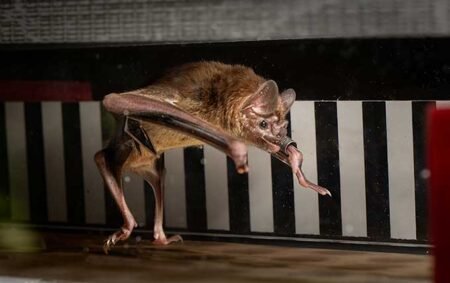A recently discovered Maya city called Valeriana, hidden under a forested area of southern Mexico, has been identified by researchers as a significant Classic Maya political capital. The city, which spans an area roughly the size of Beijing, features plazas connected by large passageways, temple pyramids, and water reservoirs that would have impressed the Mayans over 1,500 years ago. Archaeologist Luke Auld-Thomas of Tulane University discovered the site while analyzing a dataset used by the Nature Conservancy Mexico to study carbon intake and emissions in the region, showcasing the value of environmental data in archaeological research.
The discovery of Valeriana was made possible by the use of lidar technology to estimate tree heights and canopy volumes in the area. By reprocessing the lidar data, Auld-Thomas and his colleagues were able to create a topographic map for archaeological purposes, revealing the existence of the ancient city. Valeriana, located in the Maya Lowlands, was found to be quite densely settled, with over 400 structures per square kilometer. The inhabitants of the city likely lived in houses surrounded by residential patios and enjoyed activities at the nearby lagoon, ball court, or pyramidal temples.
At its peak, Valeriana had a building density more than seven times that of the surrounding region, making it one of the most densely populated zones of the ancient Maya in the area. The discovery provides valuable insights into how the Maya settled on their landscape and adds to the evidence that the Maya Lowlands were densely populated beyond just the city of Calakmul. This finding highlights the importance of environmental data in archaeological research and the role of lidar technology in uncovering hidden archaeological sites.
Anthropologist David Stuart from the University of Texas at Austin believes that the discovery of Valeriana is significant not only because it reveals a previously unknown site but also because it sheds light on the nature of how the Maya settled on their landscape. The Maya Lowlands, with their mounds, pyramids, and ancient agricultural terraces, were a breadbasket of agricultural activity during ancient times. The study demonstrates the value of lidar data in providing archaeologists with a clearer understanding of the Maya civilization puzzle and emphasizes the need for future excavation and research at these newly discovered settlements.
Archaeologist Thomas Garrison also from the University of Texas, agrees that lidar technology has had a significant impact on the field of archaeology by providing valuable data on previously unknown sites. Lidar data from regions that are not extensively known can help archaeologists gain a better understanding of ancient civilizations such as the Maya. The next step for researchers would be to visit and excavate these settlements to gain a more detailed understanding of their history and significance within the broader context of Maya civilization. Valeriana represents a major archaeological discovery that adds to our knowledge of the ancient Maya and their complex relationship with the landscape.











